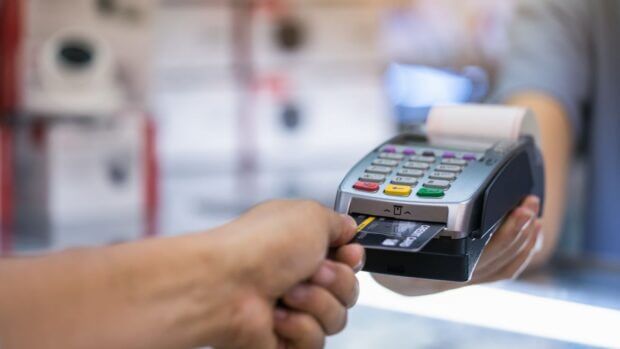Credit Card Debt in the Philippines: A Mounting Crisis
Credit card debt in the Philippines has reached what experts are calling a “critical risk” level, with the average cardholder now owing more than four times their monthly income. This alarming trend, highlighted by a recent report from Singapore-based fintech firm Roshi Pte Ltd, has sparked concern among financial analysts, policymakers, and consumer advocates. The situation is not only a reflection of changing consumer habits but also a signal of deeper economic and social challenges facing Filipino households.
- Credit Card Debt in the Philippines: A Mounting Crisis
- How Did the Philippines Reach This Point?
- Why Are Filipinos Relying More on Credit Cards?
- Interest Rates and the Cost of Borrowing
- Regional Comparisons: How Does the Philippines Stack Up?
- Who Is Most Affected?
- What Are the Risks for the Economy?
- Expert Perspectives: Is the Situation Manageable?
- What Can Be Done? Policy and Industry Responses
- The Role of Fintech and Digital Inclusion
- In Summary
How Did the Philippines Reach This Point?
The Roshi report, corroborated by multiple news outlets and financial analysts, reveals that the average Filipino credit card holder carries a debt of approximately S$2,092 (about PHP 93,000), while the average monthly income stands at just S$492.26 (around PHP 22,000). This results in a staggering debt-to-income ratio of 425%—the highest in Southeast Asia and far above regional norms.
For context, Singaporeans have the highest average credit card debt in the region (S$5,335 or PHP 236,000), but their much higher average monthly income (S$6,167.60 or PHP 273,000) keeps their debt-to-income ratio at a manageable level. In contrast, Indonesia’s ratio is just 21%, and Vietnam, the next highest after the Philippines, stands at 127%.
Roshi’s report notes:
“The Philippines presents a concerning anomaly, with relatively high credit card debt despite a modest average monthly income. This creates a debt-to-income ratio that far exceeds regional norms and suggests potential financial vulnerability among Filipino cardholders.”
What makes the Philippine case unique is not the absolute amount of debt, but the mismatch between debt and income, and the rapid pace at which this gap is widening.
Why Are Filipinos Relying More on Credit Cards?
Several factors have contributed to the surge in credit card debt among Filipinos:
- Limited Access to Other Financial Tools: Many Filipinos with access to formal financial services rely heavily on credit cards, often using them to cover everyday expenses, emergency bills, or simply to get by between paychecks.
- High Inflation and Cost of Living: Persistent inflation, which ranged between 5–8% in 2022 and 2023, has eroded purchasing power. As a result, more consumers are turning to credit cards to bridge the gap between stagnant incomes and rising costs.
- Changing Consumer Behavior: The COVID-19 pandemic accelerated the shift toward cashless transactions and digital banking. Younger generations, especially Gen Z, are leading the adoption of credit cards and fintech-driven credit solutions.
- Fintech Innovations: Platforms like GCash and Maya have made credit more accessible, offering virtual credit lines and buy-now-pay-later (BNPL) options that mimic traditional credit cards but with fewer barriers to entry.
According to a 2024 TransUnion report, Gen Z now comprises nearly one-third of all new credit card borrowers in the Philippines, up from just 15% in 2019. This demographic shift is reshaping the credit landscape, with young, digitally native Filipinos driving demand for more flexible and user-friendly credit products.
Interest Rates and the Cost of Borrowing
One of the most pressing concerns is the high cost of carrying credit card debt in the Philippines. The average annual interest rate for credit cards is around 24%, significantly higher than the 2025 inflation rate of 1.8%. This means that even if a cardholder stops spending, their debt continues to grow rapidly due to compounding interest.
On average, interest adds another S$464 (about PHP 20,600) per year to each person’s debt. This dynamic traps many consumers in a cycle of debt, making it increasingly difficult to pay off balances and regain financial stability.
Regional Comparisons: How Does the Philippines Stack Up?
The Philippines’ 425% debt-to-income ratio is an outlier in Southeast Asia. Here’s how it compares to neighboring countries:
- Singapore: High absolute debt, but manageable due to high incomes and advanced financial infrastructure.
- Vietnam: Rapidly rising credit adoption, with a 127% debt-to-income ratio considered high risk.
- Thailand: Debt-to-income ratio at 92%, with government interventions such as debt consolidation programs to mitigate risk.
- Indonesia: Lowest ratio at 21%, attributed to a primarily cash-based economy and limited credit card penetration.
Analysts warn that the Philippine situation is particularly precarious because, despite low overall household leverage (borrowings represent only 11.7% of GDP), those with access to credit cards are accumulating unsustainable levels of debt. This concentration of risk among a subset of the population could have broader implications for financial stability if left unaddressed.
Who Is Most Affected?
While credit card usage is rising across all age groups, certain segments are more vulnerable:
- Young Adults and Gen Z: As digital natives, they are more likely to adopt new credit products but may lack experience in managing debt responsibly.
- Urban Residents: Credit card ownership is highest in Metro Manila and other urbanized regions, where banking infrastructure and digital services are more accessible.
- Middle-Income Households: These families often use credit cards to smooth out cash flow, especially when faced with unexpected expenses or emergencies.
Despite growing financial literacy efforts, many Filipinos remain wary of debt. A 2023 TransUnion survey found that 55% of respondents avoid credit cards to prevent overspending, while 54% fear falling into debt. However, necessity often overrides caution, especially in times of economic stress.
What Are the Risks for the Economy?
The surge in credit card debt poses several risks:
- Financial Stress for Households: High debt burdens can lead to increased defaults, damaged credit scores, and reduced ability to save or invest for the future.
- Potential for Economic Instability: If a significant number of borrowers are unable to meet their obligations, banks could face rising non-performing loans, which may threaten the stability of the financial system.
- Widening Inequality: The concentration of debt among those with access to formal credit could exacerbate existing disparities, especially if rural and lower-income populations remain excluded from financial services.
Fitch Ratings has noted that the rapid growth in consumer lending, particularly in unsecured categories like credit cards and salary-backed loans, reflects a rising risk appetite among Philippine banks. While this has contributed to loan portfolio diversification and profitability, it also increases exposure to credit risk if economic conditions deteriorate.
Expert Perspectives: Is the Situation Manageable?
Opinions among economists and financial experts are mixed. Some, like ING Bank N.V. Manila Senior Economist Nicholas Antonio T. Mapa, caution that while the current level of credit card usage is not yet a “danger,” it could become problematic if left unchecked, especially in the context of high inflation and interest rates.
Bank of the Philippine Islands (BPI) Lead Economist Emilio S. Neri, Jr. points out that the overall household debt-to-GDP ratio in the Philippines remains low compared to other Asian countries, suggesting that the risk is still manageable. However, he acknowledges that persistent inflation and rising living costs are pushing more consumers to rely on credit lines.
Rizal Commercial Banking Corp. Chief Economist Michael L. Ricafort offers a more optimistic view, suggesting that higher credit usage may reflect greater consumer confidence and improved economic prospects. He notes that increased borrowing can be a sign of optimism about future income, especially as the country recovers from the pandemic.
Nevertheless, the Bangko Sentral ng Pilipinas (BSP) is closely monitoring the situation. BSP Senior Assistant Governor Johnny Noe E. Ravalo emphasizes the importance of tracking risk behaviors and emerging threats to financial stability, even if they are not immediately apparent in aggregate data.
What Can Be Done? Policy and Industry Responses
Other countries in the region have already taken steps to address similar concerns:
- Thailand: Expanded debt consolidation programs to help consumers manage multiple obligations.
- Malaysia: Introduced stricter lending rules to prevent over-indebtedness.
- Singapore: Invested heavily in financial literacy campaigns and consumer protection measures.
In the Philippines, however, there is little evidence of coordinated policy action to tackle the credit card debt crisis. Experts and consumer advocates are calling for:
- Enhanced Financial Literacy: Education campaigns to help consumers understand the risks of high-interest debt and the importance of responsible borrowing.
- Stricter Lending Standards: Regulatory measures to ensure that credit is extended only to those who can afford to repay.
- Debt Relief and Restructuring Options: Programs to assist borrowers who are already struggling with unsustainable debt loads.
- Promotion of Alternative Financial Tools: Encouraging the use of savings, insurance, and other products to reduce reliance on credit cards for emergencies.
Financial institutions are also adapting by offering more transparent fee structures, digital onboarding, and budgeting tools within their apps. These innovations aim to empower consumers and reduce the stigma associated with credit card use, especially among younger generations.
The Role of Fintech and Digital Inclusion
Fintech platforms are playing a pivotal role in reshaping the credit landscape in the Philippines. By offering virtual credit lines, microloans, and BNPL options, companies like GCash and Maya are making credit more accessible to underbanked and unbanked populations. This digital push is helping to bridge regional disparities in financial access, particularly in areas outside Metro Manila.
However, the rapid expansion of digital credit also raises concerns about debt sustainability and the potential for rising delinquency rates. As more Filipinos embrace credit-based financial lifestyles, the need for robust risk management and consumer protection becomes even more critical.
In Summary
- The average Filipino credit card holder now owes more than four times their monthly income, resulting in a 425% debt-to-income ratio—the highest in Southeast Asia.
- Rising credit card debt is driven by limited access to other financial tools, high inflation, changing consumer behavior, and fintech innovations.
- Interest rates on credit cards are high (around 24%), compounding the debt burden for many consumers.
- While overall household debt in the Philippines is low relative to GDP, the concentration of credit card debt among certain segments poses significant risks.
- Experts are divided on whether the situation is manageable, but all agree that proactive measures are needed to prevent a broader financial crisis.
- Policy responses in other countries include debt consolidation, stricter lending rules, and financial literacy campaigns—areas where the Philippines could take further action.
- Fintech platforms are expanding access to credit but also require careful oversight to ensure responsible borrowing and debt sustainability.












